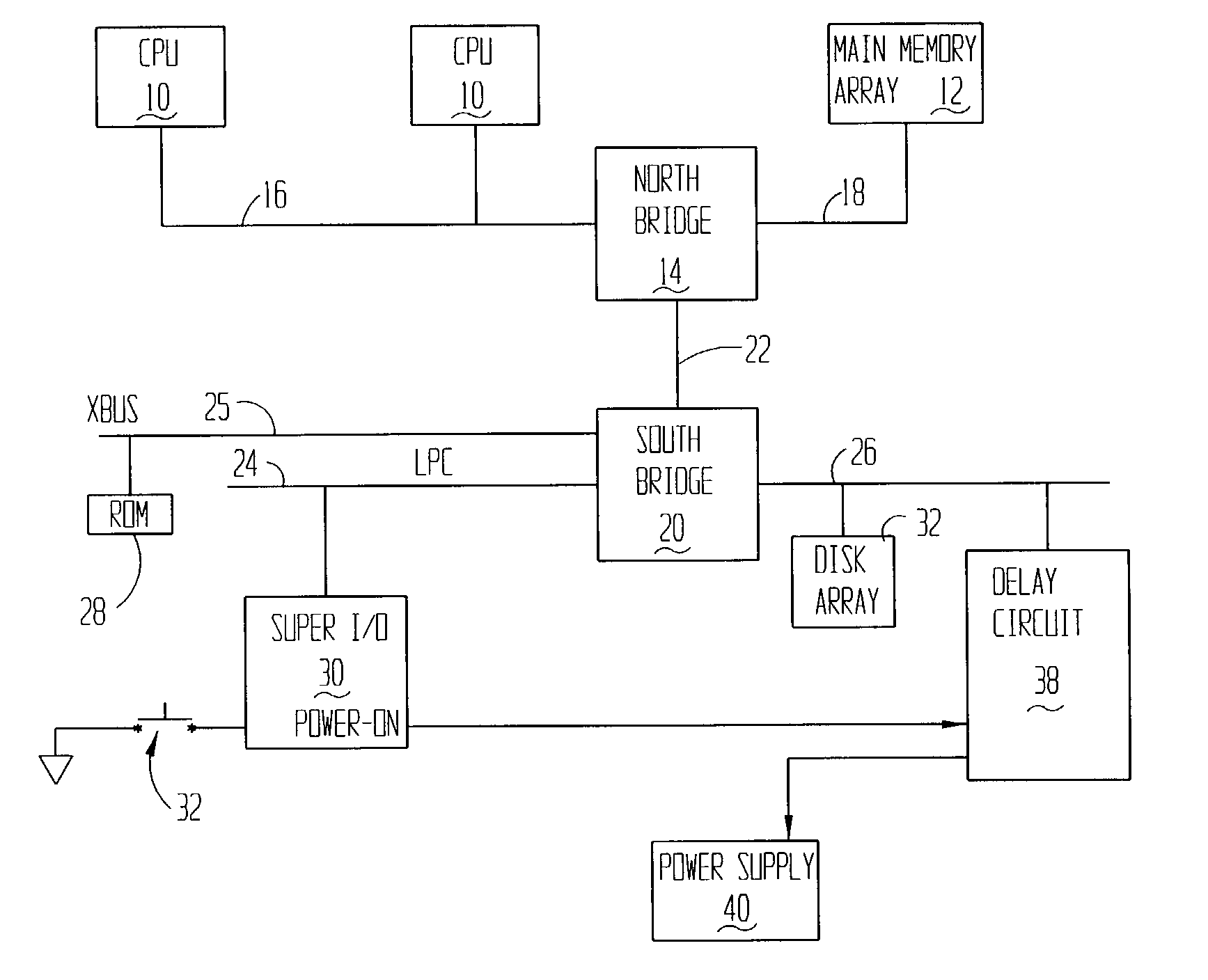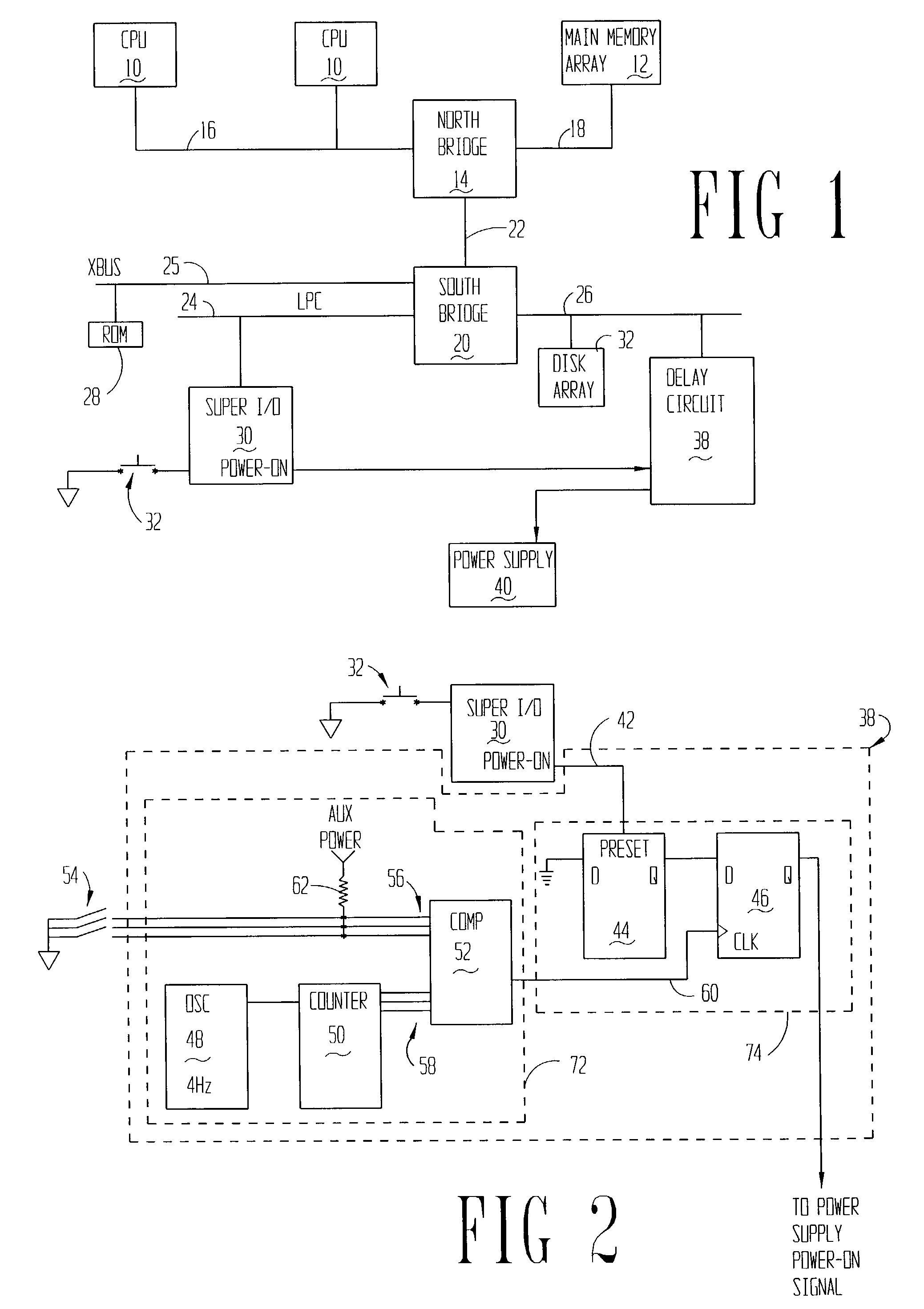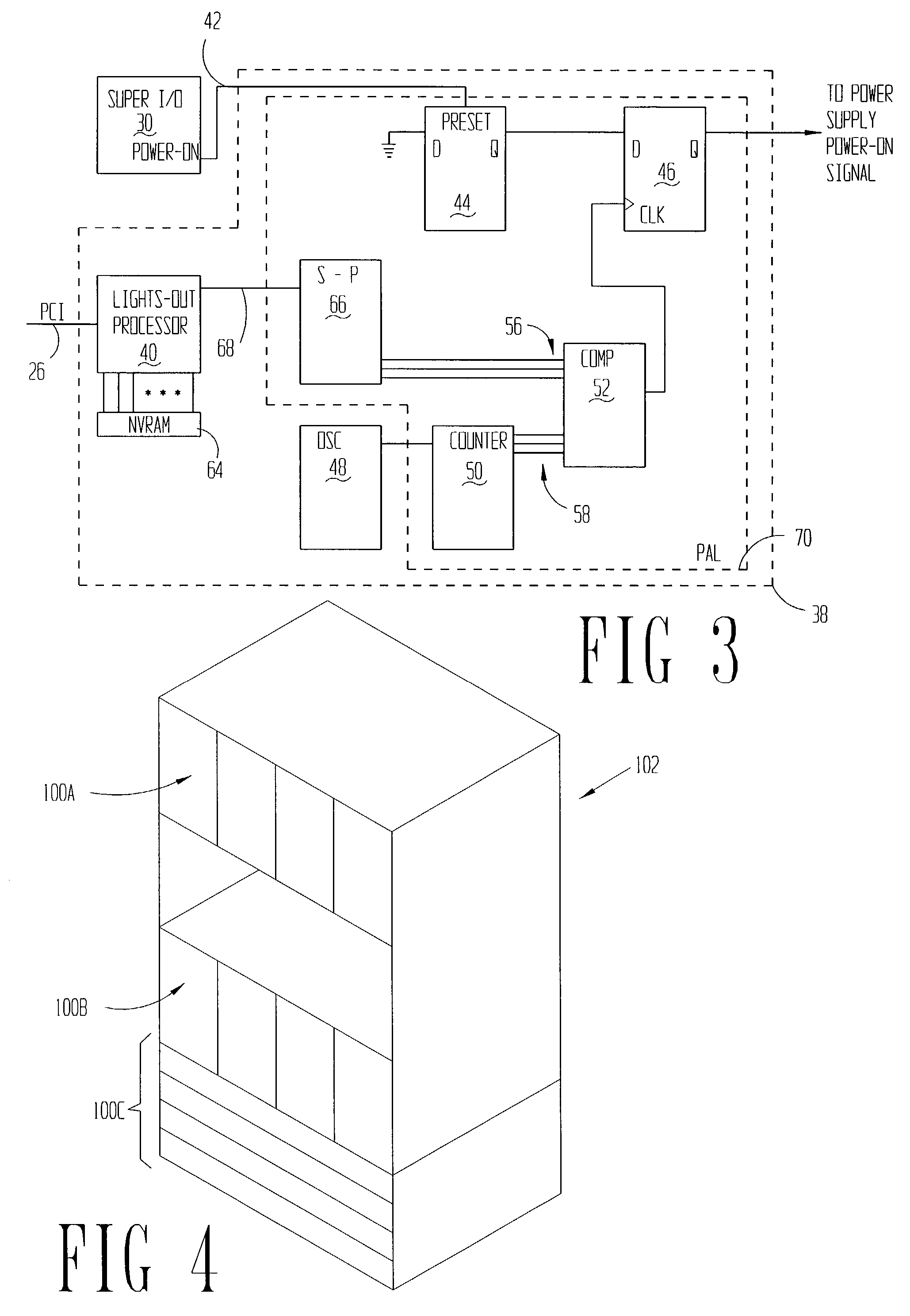Multiple server in-rush current reduction
a server and in-rush current technology, applied in the field of rackmounted server systems, can solve the problems of complex power and frequency conditioning system, modem 42u server equipment racks consuming up to 20 kilowatts of power, and modern server footprints have decreased dramatically
- Summary
- Abstract
- Description
- Claims
- Application Information
AI Technical Summary
Benefits of technology
Problems solved by technology
Method used
Image
Examples
Embodiment Construction
[0013]The problems noted above are solved in large part by a method and apparatus for staging or staggering the times that each server in a rack-mounted server system is allowed to power-on (if that was the server's previous operating condition) after a loss and return of power. The staging or staggering may take the form of setting each server to begin powering-on at a predetermined amount of time after return of power, and may also comprise a random or pseudo-random start time for each of the servers.
[0014]The preferred implementation comprises a programmable array logic (PAL) coupled in the circuit between the super input / output controller and the power-on input signal of the power supply. Based on the contents of a non-volatile storage in the computer system, preferably within non-volatile random access memory coupled to the lights-out processor, the PAL provides a programmable delay of the power-on signal propagating between the super input / output device and the power supply.
[0...
PUM
 Login to View More
Login to View More Abstract
Description
Claims
Application Information
 Login to View More
Login to View More - R&D
- Intellectual Property
- Life Sciences
- Materials
- Tech Scout
- Unparalleled Data Quality
- Higher Quality Content
- 60% Fewer Hallucinations
Browse by: Latest US Patents, China's latest patents, Technical Efficacy Thesaurus, Application Domain, Technology Topic, Popular Technical Reports.
© 2025 PatSnap. All rights reserved.Legal|Privacy policy|Modern Slavery Act Transparency Statement|Sitemap|About US| Contact US: help@patsnap.com



